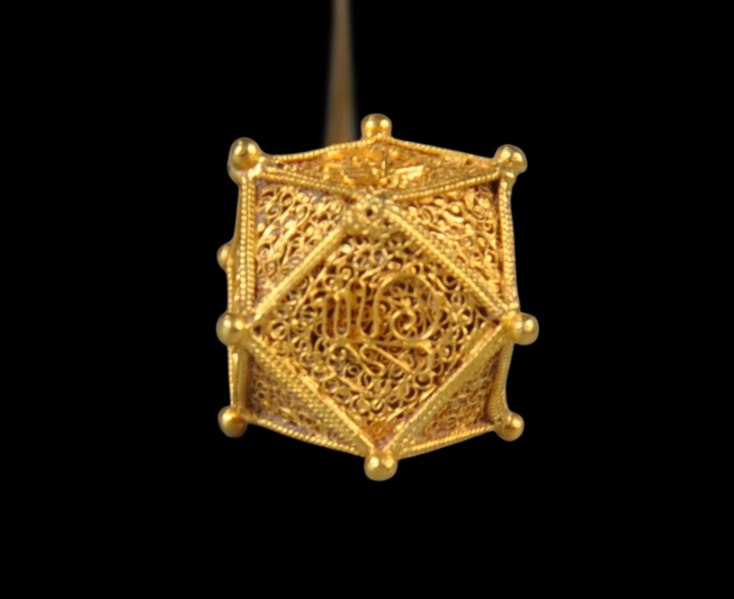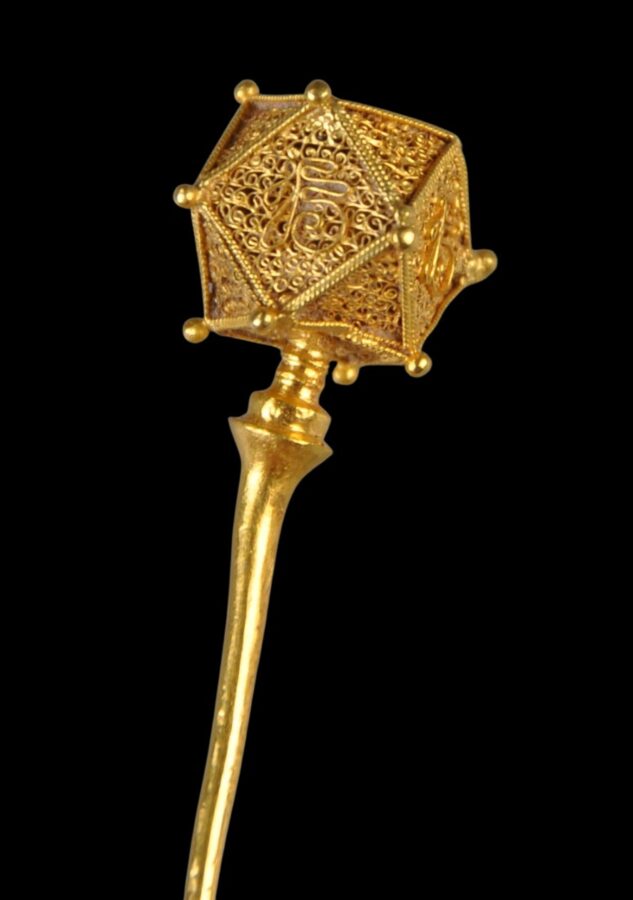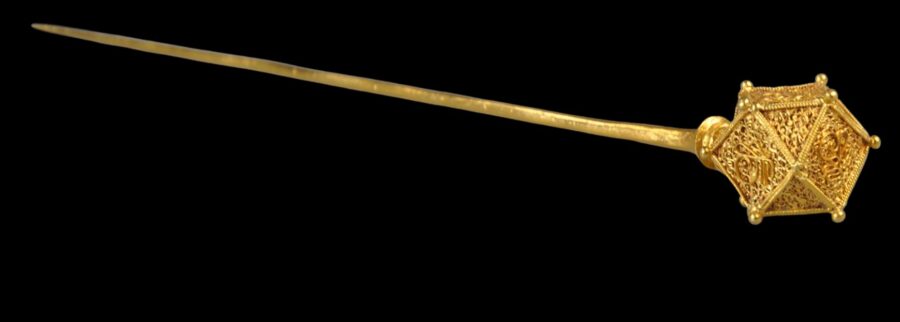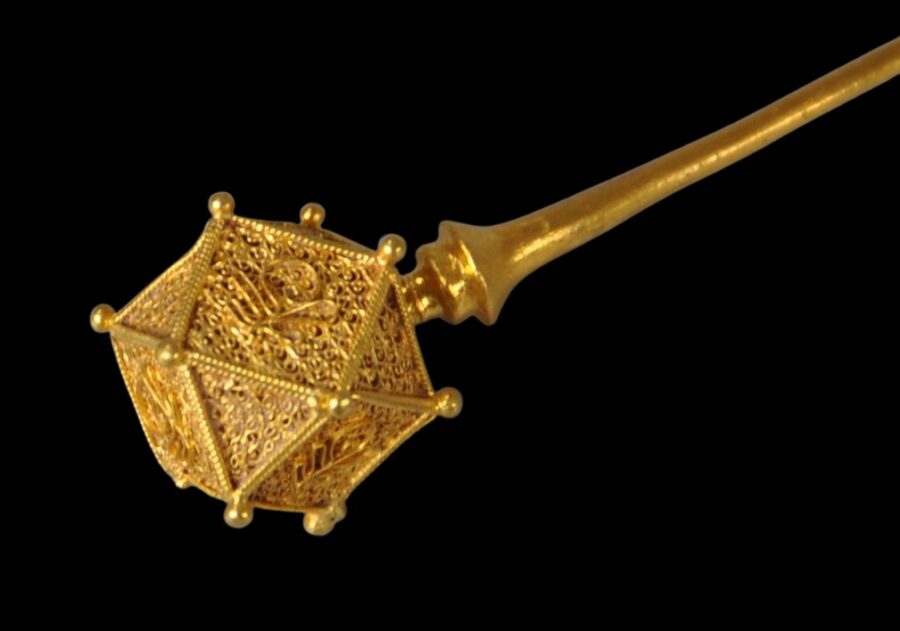This fine gold hairpin of at least 22 carat gold, dates to China’s Ming Dynasty. Several similar examples, probably from the same workshop, are known in museums in China.
The head comprises an octadecagon (18-sided polyhedron) comprising a gold wire frame infilled with tiny gold filigree work. Among these are five square sides each overlaid in gold wire with the Chinese ideogram ‘Fu’ – 福 – meaning ‘happiness’ or ‘good luck’.
As such, the hairpin would have served as an auspicious talisman, and perhaps was used in the trousseau of a young bride, or was to be presented as a gift, maybe on the occasion of a birthday.
A related pair from, Qujian Museum of Fine Arts in Xi’an, China, is illustrated in Bertrand (2024, p. 194) and was exhibited at the recent exhibition on Ming gold at the Musee Guimet, Paris. These are also illustrated in Qujiang Museum (2014, p. 104).
The example here is in fine condition with only minor deficiences.
References
Bertrand, A., et al., Ming Gold: Splendours and Beauties of Imperial China (14th-17th centuries), Musee National des Arts Asiatiques – Guimet, 2024.
Qujiang Museum, Xian, Collection Dong Bo Zhai, Ming Dynasty (1573-1620) – Royal Gold Wares, Wenwu, 2014.







